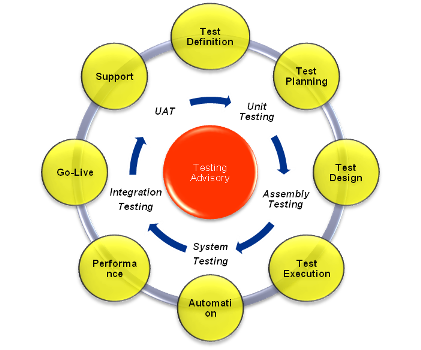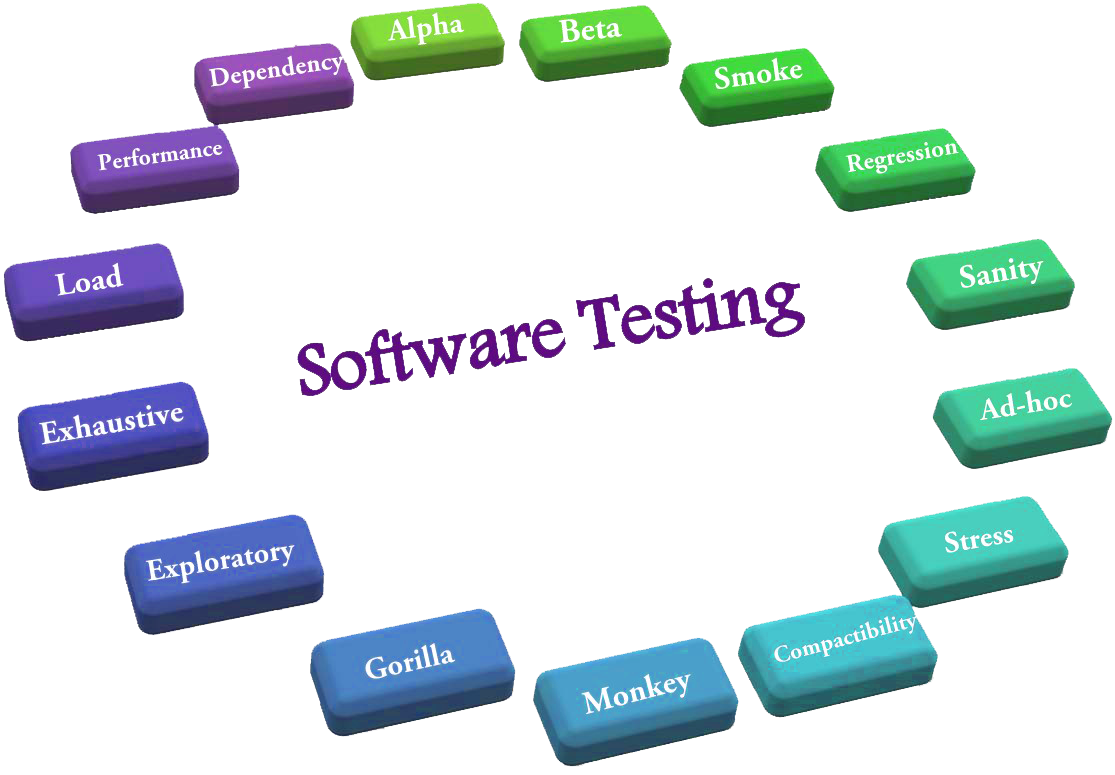Developers perform software testing to investigate the quality of a software program or product. Whether you are going to deploy a web app, a massively critical mobile app or any other software product, web app testing, mobile app testing or software testing is an essential step before its deployment. Quality control methods effectively ensure bug-free software implementation and safety. Software testing also brings out the information about the risks associated with implementation of particular software program.
How Software Testing helps?
Software testing is as important step as other steps involved in its development. Software quality testing is a challenging job but has immense benefits, as follows:
- Software testing ensure that the product or service sells by ensuring that even the most critical functionality works and does not affect interacting systems.
- One can sell the software based on proven high performance through testing. It encourages the repeat sales.
- Early detection of flaw helps in reducing the cost, efforts and time of flaw detection. Finding defects earlier reduces the need for extensive re-development and re-testing.
Mobile app quality testing
Mobile app testing ensures usability, functionality, and consistency. There are two types: Manual testing or automated testing. Quality testing of mobile apps ensures every functionality works well across different computing environments. It is important to test mobile app strategically and through all aspects so as to ensure the best and positive experience for customers or users.
Why to do mobile app testing?
In the highly competitive market of mobile applications, it is important to deliver high quality apps. The quality app can only make or break the reputation of the app. So the mobile app product owners have to take care of usability and functional requirements of their mobile app by testing the applications for various devices, networks, models, locations, browsers and operating systems.
What to test with mobile app testing?
It is a big challenge to determine what to test for the quality of the mobile app. If testing misses any critical app element, it can lead to complete failure. Each category’s features need thorough testing. For instance, functionality and compatibility testing must cover all functions across devices and systems. This kind of testing can only ensure “a quality front-end experience for all your users”.
Website/web app quality testing
As consumers use a variety of devices for surfing, the web app must deliver consistent, high-quality user experiences. Testing ensures responsiveness and performance across device sizes, guaranteeing the best web experience. Web app testing assesses compatibility, loading time, and functionality using tools like WAPT.
Software Testing Cycle
In general, software testing life cycle consists of following phases or steps:
Requirements review -> test planning -> test environment set up -> test execution -> test reporting -> test result analysis -> retesting of defect -> regression testing -> test closure
Methods of Testing
To ensure comprehensive testing of a software application, testers employ various approaches. Robust testing methodologies are essential for complex software to meet all requirements and operate securely and effectively in anticipated environments.
Static Testing: Reviews and inspections accomplish this. Static testing, conducted without executing the program, often serves as proofreading for verification.
Dynamic Testing: Executing programmed codes checks the dynamic behavior of the code.
Visual testing (GUI testing): This type of testing is test of product’s graphical user interface to ensure that it matches with the written specifications for it like button alignment, testing images, etc. on any webpage. Testers perform GUI (Graphical User Interface) testing to observe how a GUI application reacts to various data inputs via keyboard and mouse actions.
White box testing: Testers focus on how the software works and how it is implemented to test the working or internal structures of a program in white-box testing.
Black box testing: Black box testing examines functionality without accessing the internal implementation, such as the source code. This technique relies on input/output and specifications.
Grey box testing: It is termed as combination of black box testing and white box testing methods. In this type of testing, tester has access to design documents and database. This helps tester to prepare better test data and test scenarios for preparing the test plan.
Levels of testing:
Unit testing: Developers perform this to determine if individual units of source code with associated control data are suitable for use. They verify functionality of specific code sections, typically during coding.
Component testing: It is also referred as program or module testing. Component testing involves testing of every single component of an application.
Integration testing: Before system testing, integration testing verifies smooth interaction between components. It occurs post-component integration.
System testing: It tests the complete system after integrating all components.
Operational Acceptance testing: Most defects are corrected during system testing. Users or customers perform operational acceptance testing to accept the system, establishing confidence in it. Types of acceptance testing are as follows:
- The user performs the user acceptance test to check the functionality and validate whether the system is fit for business use or not.
- The operational acceptance test validates whether the system coordinates with all operational requirements.
- Perform contract acceptance testing against the acceptance criteria of the contract for producing customized software.
- Perform compliance acceptance testing against regulations like legal, government, or safety regulations.
Alpha testing: Developers perform it by observing user problems. Alpha testing occurs when an application nears completion. Group of in-house testers and QA engineers conduct it.
Beta testing: It is referred as field testing and is performed at customer’s site.
Types of testing:
We categorize the types of testing required for an application into two categories: Functional testing and Non-functional testing.
Functional testing: It is performed to verify or test a function of specific code. It should answer questions like “does particular feature work?” or “can user perform this particular action?”
Non-functional testing: It does not test for specific functions but rather examines aspects of software such as scalability, security, or behavior under certain conditions.
Following are the types of functional testing:
Installation testing: It helps to ensure that the system can be installed and working smoothly on customer’s hardware.
Development Testing: In this software development process, we apply defect detection and prevention strategies to reduce time, risks, and costs associated with software development.
Usability Testing: It aids in detecting the software’s ease of use for users. It assesses the software’s user-friendliness, examining aspects like flow, navigation, content, and speed.
Sanity Testing: It is performed for some basic tests and it determines whether it is feasible to proceed for further testing. It usually helps in finding dependent missing functionalities.
Smoke Testing: This testing reveals even simple failures that could affect largely and may lead to complete rejection.
Regression Testing: It specifically detects new software bugs or regressions in existing system parts after modifications such as patches, configuration changes, enhancements, etc.
Destructive Testing: It is performed to test the robustness of any software.
Recovery Testing: Testing is performed to assess the system’s ability to recover quickly from failures, crashes, and hardware issues.
Automated Testing: It requires special software to control the execution of tests.
User Acceptance Testing: The final stage of the functional software process is considered.
Following are the types of non-functional testing:
Compatibility Testing: Perform it to evaluate software compatibility with the computing environment. The computing environment could be operating system, hardware, database or any other system software.
Performance Testing: It determines the performance of software or a system in terms of stability, responsiveness, and speed. Sub-categories include Load Testing, Volume Testing, and Stress Testing.
Database Testing: Database testing determines the quality of a customer’s experience in terms of interacting with application. This includes verifying all table names, column names for each table, column types for each table, primary key for each table, foreign keys, column data types between a foreign key column and a column in other table. This also includes testing for Indexes, clustered or non-clustered, unique or not unique.
Perform security testing.: Security testing determines the application’s security. It checks for vulnerability to attacks, hacking, or unauthorized logins, ensuring data protection and functionality maintenance.
- Security assessment
- Vulnerability scanning
- Penetration testing
- Pre-certification security audit
- Static code analysis
Accessibility Testing: It falls under usability testing, determining the software’s accessibility or availability to as many people as possible.. This testing includes compliance with various standards like:
- Web Accessibility Initiative (WAI) of World Web Consortium
- Section 508 Amendment to Rehabilitation Act of 1973
- Americans with Disabilities Act of 1990
Internationalisation and Localisation Testing: It involves adaption of applications into various regional as well as international languages and technical requirements of target market. This kind of testing tests the general ability of software, verifying that the application can work even after translating it into different languages or adapting it for different cultures.
Software Verification and Validation:
Software verification helps in ensuring that the application or software is in full accordance with the expected environments. It involves the process that evaluates whether the final product of the specific development phase matches with the requirements that were imposes at the initial phase of development.
The software validation process evaluates the product at the end of the development process and confirms fulfillment of specified application requirements.
Software Quality Assurance:
Software quality assurance is the measure to monitor the process of software development to ensure the best quality of the final product. It assures that all activities, products, and processes comply with pre-defined plans.
Krify is a leading IT solution provider that offers premium software quality testing and quality assurance services that caters the expectations in the demanding market for the software products or systems with greater efficiency and best user experience. We deliver high quality web app testing as well as mobile app testing services that is result oriented and at the same time cost-effective. Contact us today for all your quality testing issues.






